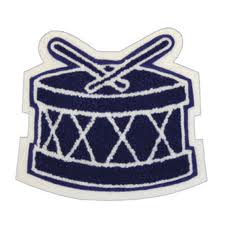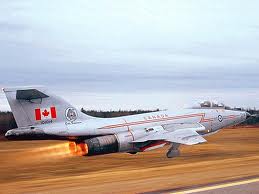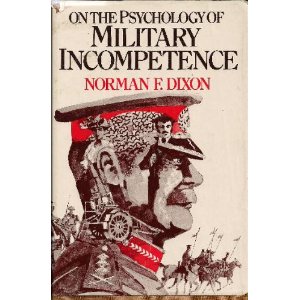
Long time e-Veritas readers will recognize the name Karen Inkster.
Karen was married last year and it has been a whirlwind year – moving, new job, another new job, moving again. Through it all she has maintained a small contract with RRU to continue to work with ex-cadets.
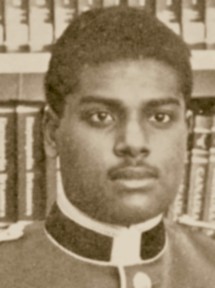 xxxxx
xxxxx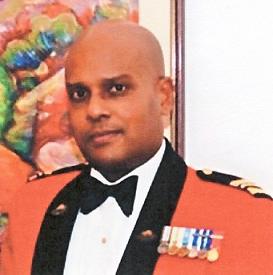
xxx
Major (Ret’d) Rohan J. Maxwell, 15658 (RRMC 1982-87)
This article was written as a response to the “Share Your Story” portion of the Royal Roads Paver Stone Campaign. For more information about the Paver Stone campaign and how to order a stone, please contact Dave Wightman, 3334, Secretary of the Vancouver Island Ex-Cadet Club at VIExcadetClub@shaw.ca. Royal Roads ex-cadets, faculty and staff are also invited to participate by sharing their story. All contributions will be collected and displayed in the Royal Roads museum. For further information, please contact Karen Inkster Vance at Karen.Inkster@royalroads.ca.
Who am I?
At present I am the Senior Political-Military Advisor, NATO Headquarters Sarajevo. In this capacity I’m responsible for an 11-person multidisciplinary and multinational staff providing analytical, planning and implementation support to NATO’s assistance programme in Bosnia and Herzegovina, through which the Alliance seeks to support the country’s efforts to carry out the reforms necessary for NATO membership.
What years did I attend RRMC?
I was at RRMC from August 1982 to May 1987: it was supposed to be a four-year programme, but I repeated fourth year for a combination of medical and lack-of-studying reasons. I spent all but the last term of those five years in Mackenzie Flight.
What prompted me to attend RRMC?
It had been my vague intention to join the military since childhood, shortly after immigrating to Canada from Guyana at the age of 10. This intention crystallized when a CF recruiting team came to my high school in Waterloo when I was in Grade 9 and I learned about military college and the Regular Officer Training Plan. In those days I was very interested in aircraft and flying, and so I decided that I wanted to attend RMC and to be a military pilot.
For the remainder of high school I visited the recruiting centre in Kitchener at least once a year. I also joined Air Cadets, earning a glider pilot’s licence along the way. A familiarization visit to RMC and CFB Trenton in late 1981 convinced me that I was on the right track, although I’d had to adjust my ambitions from aircrew to aerospace engineer as my eyesight was poor. During Grade 13 I went through the recruiting process and in the spring of 1982 I was summoned from French class to the school office, where I was handed a telephone and the recruiter offered me a position at Royal Roads. I’d been focused on RMC Kingston, but I said “Yes” immediately. As I was not yet 18 my answer did not become binding until my mother signed the paperwork later that week.
I took the Oath of Allegiance in June 1982 (for the second time; having taken it two years earlier when I became a Canadian citizen) and a month later I went off to basic officer training in Chilliwack. My Air Cadet background proved useful and the six weeks turned out to be far easier than I’d expected. However, I decided that I preferred Army things and so decided to seek a transfer from aerospace engineer to something muddier.
Any specific memorable experiences at RRMC?
For most of my time at Royal Roads I was a less than stellar cadet, both academically and militarily, and as a result I spent a lot of time in hot water. In retrospect the authorities were rather tolerant, but that was lost on me at the time. Nevertheless I have lots of good memories of those years, and even at the time I knew that most of the bad memory material was self-inflicted.
Some possibly interesting snippets follow.
• Near the end of Recruit Term in 1982 the recruits were summoned to the Quarterdeck in PT gear one evening during study hours. Study hours were supposed to be sacrosanct and so we realized that something unusual was happening. This presentiment proved accurate, as a succession of cadet officers proceeded to update us on political developments since we’d entered the College grounds a month or so ago and lost contact with the normal world. It appeared that tensions in Europe had increased, NATO and the Warsaw Pact were on the verge of war, and the CF was frantically reinforcing units in preparation for the long-anticipated battle on NATO’s central front. Third and fourth year cadets were to join units immediately and second year cadets were to undergo a hasty training period before doing the same. The fate of first year cadets was still be debated, but Recruit Term would be terminated immediately so that we could prepare ourselves for whatever came next. This was convincing stuff, particularly as no less a figure than the Staff Officer Cadets & Military Training, a stern member of the College Staff, appeared at the end of the briefing to confirm the facts. Ordered to form up in front of Grant Block, we went eagerly, and were drawn up in good order when the waiting senior cadets, pre-positioned on the roof, proceeded to bombard us with water balloons. It says a lot for the experience of Recruit Term that most of us viewed the outbreak of World War Three as a fair trade for ending it a few days early and were commensurately disappointed when it all turned out to have been an elaborate joke.
• I joined the band during first year and remained with it for most of the remainder of my time at RRMC. I was rather short on talent but with patience the bandmaster and my fellow band members managed to turn me into a passable snare drummer. The major challenge so far as I was concerned was learning the intricate routine of the Drummers’ Call, to be performed at the Sunset Ceremony at the end of the academic year. I became sufficiently confident to play the entire pattern, tossing the sticks from hand to hand, while marching uphill, backwards, with my eyes closed. That bit of cockiness didn’t do me much good when the drum line marched out of ranks to stand in front of a real audience and I felt a severe attack of nerves, but to my amazement I got through the routine without dropping a stick: I can still remember the sense of relief when we about-turned and marched back into ranks.
• In the spring of 1983 the Queen visited RRMC. It was a rainy day and I assumed that no-one would turn up to watch. This assumption was dispelled most abruptly when we wheeled right onto the parade square and found what seemed like half of Victoria waiting to see Her Majesty casting her eye over a damp but very pukka Cadet Wing. Shortly afterwards the first years were told that due to our performance during the Royal visit we were no longer required to march within Nixon Block. This was a most welcome development, not least because it removed the necessity of performing parade-ground drill when collecting a pizza delivery.
• At the end of first year most of us were shipped off to St. Jean for second language training. We regarded this as a holiday and were unimpressed to learn that we would be required to continue drill and parades. Naturally the idea of RRMC cadets learning anything about drill from anyone not from RRMC was greeted with scorn and my roommate and I sought a way to assuage our angst. It turned out to be our rifles. The 7.62mm FN C1rifle that we used those days was a heavy beast but with a bit of ingenuity one could remove many interior bits without being detected. I entered into a competition with my roommate to see who could go on parade with the least amount of rifle – and not get caught, of course. The contest escalated but we remained tied over the weeks, until my roommate turned his attention to the magazine and managed to get the magazine base plate to remain attached after he’d removed the magazine spring. I was about to concede defeat when I was struck by an idea that I felt was worthy of Newton. And so it was that I went on parade that week carrying a rifle that lacked a breech-block carrier. This was a highly visible part, its absence certain be noted during inspection – but I’d fashioned a cardboard facsimile and painted it to match. It didn’t rain on the parade and I wasn’t asked to open the action for inspection, so victory was mine.
• In second year the graduation parade included a fly-past by a CF-101 Voodoo, which was then on the verge of replacement by the CF-18 but was still a powerful beast of an interceptor. The College Sergeant-Major, striding up and down in front of the assembled Cadet Wing during one of the many rehearsals, explained the concept. The aircraft would orbit over the Straits of Juan de Fuca. A spotter in the turret of the Castle would call it in at the appropriate moment, when the Cadet Wing began the Advance in Review Order, to followed by the General Salute and Present Arms. Boots could crash down, bayonets and swords would sweep up to flash in the sun, and at that the precise moment the Voodoo could come in low over the lagoon and swept up into an afterburner assisted climb directly over the parade square. This, we were assured by the Sergeant-Major, would be a sight to bring about certain unusual reactions in the audience. On the day all went perfectly and, although we were unable to judge the audience reaction to the degree necessary to confirm the Sergeant-Major’s prediction, the low swooshing sound of the incoming aircraft, followed by the voice-of-god sound and sensation of the engines going into afterburner, proved an excellent crowd-pleaser.
• In my third year RRMC admitted its first lady cadets and many things changed. One of them was a new twist on the team spirit that we tried to develop during Recruit Term. A “females only” laundry room had been installed in each flight, meaning that the few women in each flight shared a washer and dryer conveniently located down the hall, while the much larger number of men in each flight shared an equivalent amount of equipment with all the other men in the building, located on the ground floor. The justification for this was that experience at RMC Kingston had shown that it was best that male and female laundry not be mixed. Laundry was a perennial problem during Recruit Term, due to both the lack of time available to recruits and the sheer amount of laundry that had to be done. In at least one flight the recruits reached the logical conclusion, and at crunch times the female cadets collected and did the laundry – presumably mixed – while their rooms were cleaned, boots polished, etc, by their male colleagues. (Another thing that changed was the Sergeant-Major’s description of how this year’s Voodoo fly-past would affect the audience.)
• In my first fourth year my erratic performance and a medical absence from RRMC during first-term exams placed me very close to the line of insufficient academic credits for graduation, but I managed to make it into 1986 with enough credits to get me to graduation if I didn’t flub anything during the second term. Shortly before graduation my seeming ability to get by in spite of myself was recognized by the presentation of the “Flashman” award: a Verey flare pistol mounted on a wooden base, awarded to the fourth year cadet who, in the opinion of his peers, came closest to the edge without falling over it. Sadly the award proved premature and I did not graduate with my class of entry. Fortunately for me, the Commandant saw something worth salvaging and I was permitted to repeat the year. This did indeed salvage my career and gave me sufficient time to turn into a real person, as near the end of that otherwise disastrous year, I had met the woman who would eventually consent to marry me, and by the end of my second fourth year we were well on our way to that happy outcome.
• During the traditional “100 Days” (to graduation) celebrations in 1986 some members of what was then my graduating class decided to paint “100 Days” on the steps of Victoria legislature, and this operation was duly executed in a stealthy and efficient manner, providing an excellent front-page photograph in the next day’s newspaper. Unfortunately our assessment of post-operation events failed to consider the fact that the message itself pointed a damning finger to the senior class of Royal Roads, and so in due course we were dispatched, suitably chastened, to scrub the steps clean. A member of the clean-up crew, also featured in the newspaper, has since risen to general officer rank.
• During my second fourth year I managed to remain on track, as my future wife had made it clear in no uncertain terms that my traditional “a rebel without a clue” approach to work and study would find no favour with her. It turned out that I was actually quite good at both work and study, and the extra year was put to good use. In due course I was honoured with a bar to the Flashman, and, more officially, slow-marched with my new graduating class through the corridor formed by the Cadet Wing, swords at the salute as the Wing presented arms in succession of opposing pairs – and changed to the quick step as we marched off the parade square and out into the real world.
• That autumn I returned to RRMC with my wife for another important occasion: the christening of our son. He was christened on the Quarterdeck by the RRMC Chaplain, who had managed to overcome his doctrinal reluctance to baptize the offspring of two atheists. By that stage there was no room to engrave the name of Christopher Rohan McLeod Maxwell on the bell in which he was christened, but I was told that his name would be added to one of the plaques upon which names were recorded since the bell had filled up.
What did I go on to do in my career?
I graduated with a BSc in Physics and Computer Science in May 1987, was commissioned into the Canadian Military Engineers, and spent 10 of the next 18 years on regimental duty (serving over the years as troop commander, adjutant, operations officer and squadron commander) with 1 Combat Engineer Regiment (Chilliwack, Iraq/Kuwait); 56 Field Engineer Squadron (St. John’s); and 5e Régiment du génie de combat (Valcartier). I also spent five years in various staff positions in Land Force Atlantic Area Headquarters (Halifax), one year as a senior technical adviser with the Cambodian Mine Action Centre, and two years in Bosnia-Herzegovina as a security sector reform advisor. As well, thanks to their distance education programme, I completed in MA in War Studies from RMC in 2003. Upon retirement from the Canadian Forces in July 2005, in the rank of Major, I went to work for NATO Headquarters Sarajevo as Chief of the Politico-Military Advisory Section, having spent the preceding two years in Sarajevo on secondment from the Canadian Forces. In between those lines my wife, Maggie Stokes, and I have raised five sons, five cats and one dog, in eight homes distributed across four provinces and three continents.
How did my training at RRMC serve me throughout life?
I had many experiences at RRMC, both positive and negative, but I learned from all of them – not necessarily at the time, mind you. I think the main things that I gained from RRMC were resilience, self-sufficiency, time management, stress management, responsibility, leadership, and a strong sense of individuality. I think that the first six points are self-explanatory and flow logically from the design of the College environment; for the sixth point I should also note that one can learn about leadership from being well-led or from being poorly-led, and the variety of cadet officers and College staff provided for both opportunities.
The last point, regarding individuality, may seem counter-intuitive, given the nature of military service as it is commonly perceived. However, having thought about it for nearly 24 years now – a thought process initiated by my wife’s graduation gift to me: a copy of Dixon’s “On the Psychology of Military Incompetence” – I think that for many of us RRMC was an intense experience that reinforced, for better or worse, whatever traits we brought to it. If you entered Royal Roads as a person who lacked self-confidence and sought the comfort of hierarchy and uniform, you emerged the same way, but more so. Conversely, if you entered as a person with an individualistic bent, you came out with that trait reinforced, but shaped in a more productive and functional way.



